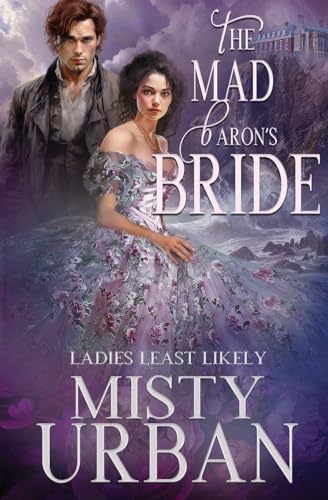The Mad Baron’s Bride (Ladies Least Likely)
The best way to describe Misty Urban’s work is atmospheric. Her sense of setting is impeccable. In The Mad Baron’s Bride, set in England in the year 1800, Mrs. Leda Wroth is a companion to the Lady Plume. But Leda Wroth is not her legal name, and while she is a widow, the circumstances were far from respectable. Soon, Lady Plume’s nephew Jack arrives, needing a governess for his motherless child up in Norfolk.
The chatty, society-laden Upper Assembly Rooms in Bath are chock full of wealthy displays of finery and the mating habits of the ton. Leda Wroth helps young women interested in accepting proposals by secretly vetting their suitors to see if they will be kind and generous husbands. Often, they will not.
Jack is instantly attracted to Leda’s unusual status as what he terms an “unmatchmaker.” She is respected and intelligent, and he is interested in her as a governess surely, but more so as a wife—if she can manage the distant and cold Norfolk. At first Leda refuses, but when her past catches up with her, Leda agrees to leave Bath only long enough to find a suitable governess. As they travel, the reader moves from a bright and lively city to the remote and isolated rural manor house. Norfolk is delightfully cold and desolate, complete with the cavernous Holme Hall, a beautiful and unpredictable dead wife, a house full of ghosts, and secrets the servants and Jack’s daughter strain to keep.
With a dash of Romani, brick making, and unsteady lime quarries, The Mad Baron’s Bride combines the mannered dances of Jane Austen and the gothic atmosphere of Daphne du Maurier.










